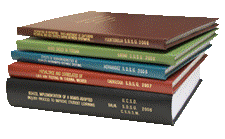Libraries, University of Nebraska-Lincoln

Archival Master’s Theses from the University of Nebraska-Lincoln
First Advisor
Herbert F. Schliesser
Second Advisor
William F. Shrum
Date of this Version
12-1966
Document Type
Thesis
Abstract
The subject believe. that. he can produce two distinct voice qualities;. namely "good" and. °poor" quality sounds. Speech sounds produced with "good" voice quality sounds are inconsistent and are perceived by the speaker and experimenter as being lower in pitch, longer in duration, more resonant, and of adequate loudness. The only way that the subject can explain what he does to produce a "good" quality sound is to state that "I place the sound lower in my throat." This description could indicate any number of structural changes in the esophageal speech mechanism. For the foregoing reasons, it was considered appropriate to determine what changes are occurring in the speech mechanism during his "good" and "poor" voice quality productions.
The purpose of this paper, therefore, was to analyze certain vowel sounds of an esophageal speaker produced with his "good" and "poor" voice in order to determine the nature of the relationship between the changes in his speech mechanism and the differences in quality of the sound produced as measured by the sound spectrograph. Since only on subject was involved, this study was necessarily limited in scope and may be considered a "pilot study. Its primary function was: (1) to determine if a study of this nature were feasible, and (2) to help the patient to achieve consistency in his "good" quality sound productions.


Comments
An Option II Paper Presented to the Faculty of The Graduate College in the University of Nebraska In partial Fulfillment of Requirements For the Degree of Master of Arts Department of Speech. and Dramatic Art, Under the Co-Supervision of Dr. Herbert F. Schliesser and Dr. William F. Shrum. Lincoln, Nebraska: December 1966.
Copyright (c) 1966 Marlyn Kay Swanson Genreux